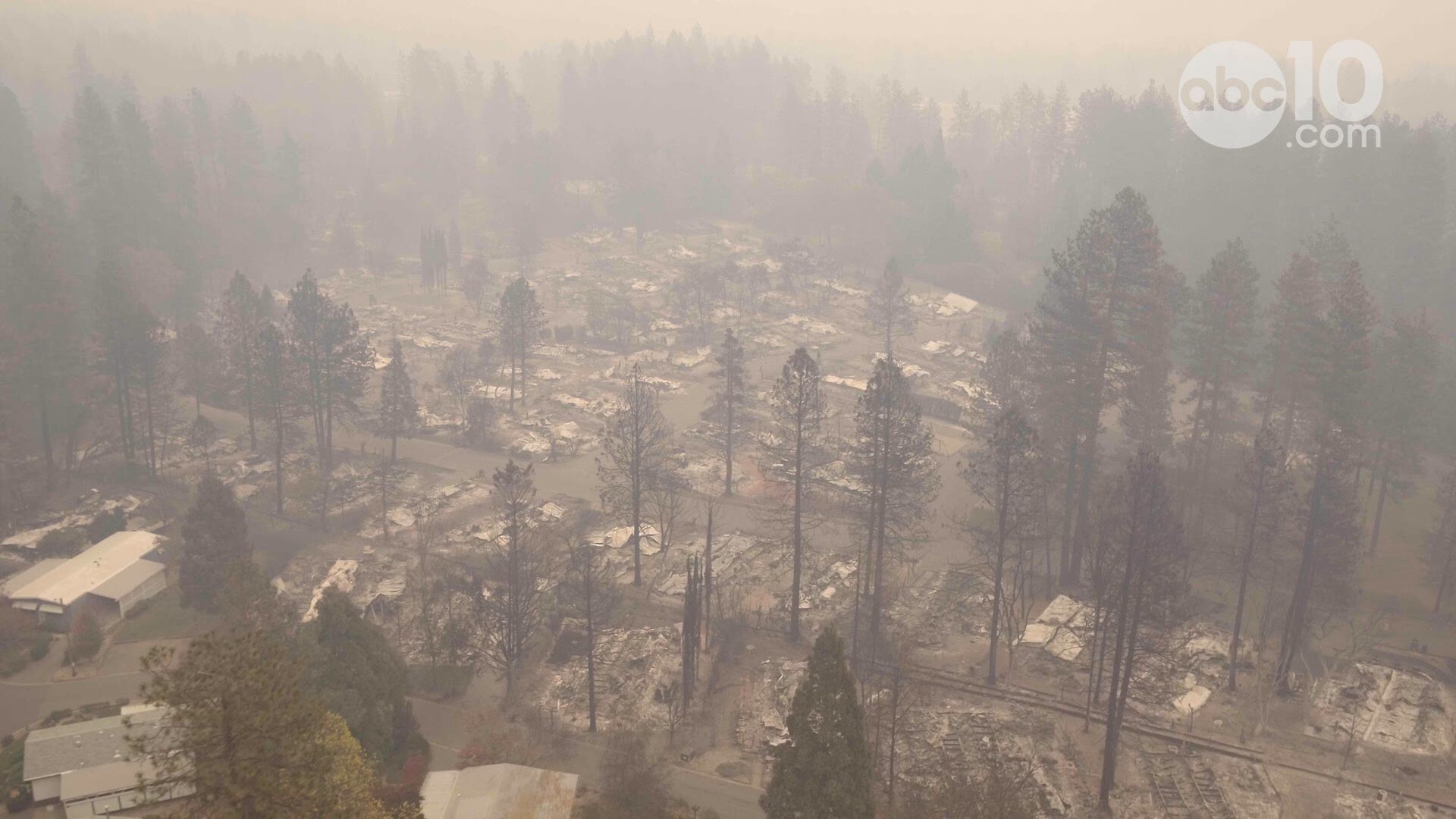If you are viewing on the ABC10 app, tap here for multimedia.
The Camp Fire, which at the publishing of this article has destroyed almost 150,000 acres and 12,000 homes and businesses, and killed at least 76 people, is both the deadliest and most destructive fire in state history.
The data aggregated by CAL FIRE and other state and federal agencies paint a grim picture of that history and may provide a preview of the years to come.
Some of the oldest data CAL FIRE has published shows how much wildfires have cost the state over the last 30 years.
In 1980, CAL FIRE's yearly suppression cost, which includes the annual budget for the department and any additional costs accrued during firefights, was almost $12 million. The costs of the current fire season were estimated at $454 million earlier this year. But that was before the department ran out of funding and Director Ken Pimlott requested an additional $234 million from state legislators to help the agency get through the end of the year.
Money is not the only thing wildfires have cost the state. They are also paid for in land.
The problem is two-fold: More fires are happening every year, and every year the fires burn more land. Between 2008 and 2016, wildfires burned almost 9 million acres of California landscape. This includes both federal and state-owned land.
The 9 million acres don’t even include three of the top 20 largest fires in state history: the Carr, Thomas and Mendocino Complex fires, which collectively burned almost 1 million acres in 2017 and 2018.
The average trend of both acres burned and the number of fires per year has been steadily increasing. And the data also shows that manmade causes are increasingly more responsible for that destruction.
When a wildfire is investigated by CAL FIRE, officials categorize the point of origin into several causes: Arson, campfire, debris burning, electric power line, equipment use, vehicle, playing with fire, railroad, smoking, lightning, miscellaneous and undetermined.
Of these dozen causes, only three are not manmade causes or are considered too obscure to categorize. As shown by these graphs, manmade causes are to blame for the lion’s share of both the number of fires started and the number of acres burned.
Some of these causes are accidental. CAL FIRE determined the cause of the Carr Fire in Redding to be a flat tire. But some of the causes are due to negligence.
PG&E equipment failure could be responsible for starting the Camp Fire, although a formal CAL FIRE investigation has not yet been initiated.
PG&E power lines and other equipment were found to be responsible for a dozen deadly fires in 2017 according to CAL FIRE. But outgoing Governor Jerry Brown and other state legislators recently passed State Bill 901, which provides $1 billion in additional funds to emergency response and management agencies, but also protects utility companies, like PG&E, for certain liabilities involving wildfires.
However, according to CAL FIRE data, of the electrical equipment is shown to be the second most frequent cause of both number of fires started and acreage burned.
There are plenty of competing interpretations over whether PG&E can be held completely responsible for the devastation started by their equipment. But once again, the data shows the company’s history of lobbying payments and the rapid spike of over $7 million in the last year.
California governors, including Brown and Governor-Elect Gavin Newsom, have at least attempted to provide the same amount of respite for affected citizens, as well as its businesses.
When a governor declares a state of emergency in the face of a catastrophe, federal and state funds and resources are allocated to the affected areas. Out of the 100 California state emergencies declared in the last 18 years, 61 of them have been in response to wildfires.
So, when the Camp Fire is said to be the deadliest and most destructive in state history, that declaration is not spoken lightly. It is a trend that on its own may seem like an anomaly but is slowly becoming the new normal.
Several times, CAL FIRE representatives, at press briefings for various fires, have stated they are now fighting fires in conditions they have never before experienced. And California’s climate data shows that there is no indication of that changing.
Average temperatures are not the only metric that makes California a historical tinderbox, but it is a good indicator of things to come.
As Brown, Newsom and President Donald Trump toured the damage of the deadliest fire in state history, Newsom stated, “We are in it for the long haul,” speaking of the government’s response and responsibility to the survivors impacted by the Camp Fire.
But Californians are going to be in it for much longer than many may realize.
The Camp Fire has killed at least 76 people, destroyed an entire town of more than 25,000 residents and affected the lives of many more. The death toll of the Camp Fire continues to increase every day. To put it in perspective, the next deadliest fire occurred back in 1933 at Griffith Park in Los Angeles and killed 29 people.
Next year, there may very well be an even deadlier and more destructive fire. The Camp Fire will be tallied up in costs, acres and lives and entered into data spreadsheets for future reference. But the devastation experienced by thousands and witnessed by millions will never be able to be truly quantified.

